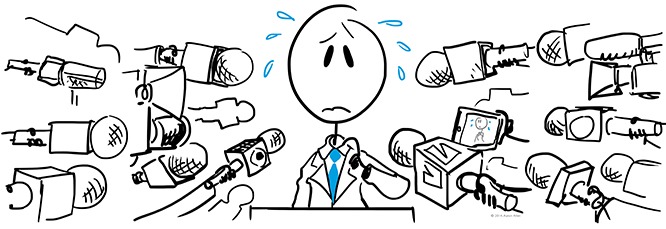Using websites to reach consumers to educate, advertise, and sell products is a great tool that is commonly used today. As technology advances, so does the expectation that the producer needs to supply endless information about a product or service in a clean, easy, and productive manner.
Today, I will be looking at two company's "Home" pages to compare them against each other. The companies selected are: Caterpillar and CaseIH Agriculture. The criteria that I will be looking for on each site will be: organization, if there is a consistent theme, if it is easy to navigate and understand, visually interesting, informative, and evaluating the use of space. I will look at what I see are positives elements of the site as well as the negatives that can be approved.
Case IH Agriculture: http://www.caseih.com/northamerica/en-us
Positives:
Snapping a screen shot of the "Home" page of Case, the first thing I saw was the huge picture banner in the middle of the page. This lead my eyes from left to right, down, and around. The website did a nice job of getting the viewer to look at everything on the site by being lead with details designed to catch someone's eye. The navigation bar on the top is easy to understand and can answer my questions quickly if I were looking for a specific item.
Case IH color red is consistent throughout the page as well as the font style. The links and tabs all have the same style boxes creating unity on the page.
The content on the Home Page shows me that they are advertising some of their latest products and that serving their customers is one of the Case's main focuses. This is prevalent in their "What can we help you with?" section. This is unique because I don't see this very often on the front page of a large company, let alone in the "Contact" section.
Negatives:
White space. Having white space in an article, in this case light grey, is good to have. The presentation of this screen has a lot of empty space surrounding the "What can we help you with?" section. This can be good so it won't confuse the customer but from an advertising eye, I could see room for growth by utilizing this space and tightening information.
Alignment. Consciously or not, people notice when something is out of order. I noticed on the grey tabs towards the bottom they are not aligned all together at the same height.
Spacing between content. Looking at the bottom section again, I can see that the spacing between the articles are uneven causing me to think one paragraph is associated with another when in reality all three are separate entities. There could be room for improvement here to ease viewer's visual appeal of the site.
Over all, a good site to look at. Very clean, crisp, straight to the point and easily accessible.
Caterpillar
http://www.cat.com/en_US/products/new/equipment.html
Positives:
Understandable. The site (once you find what you are looking for) is easy to understand. The machines are categorized and within each folder there is a ton of information specific to that product. This is great because then the consumer doesn't need to go looking for information.
Organization/appearance. Caterpillar did a great job of incorporating their colors into the site to help guild the eye through the page. The yellow bar on the top directs the eye to the main tabs on the site, then when scrolling down the eye is dragged to the products. This is clever because the only thing to distinguish between the content on the page is by color.
Negatives:
Navigation. Caterpillar offers a wide variety of machines within different markets, creating a need to break content into specific sections. To get to this page, the user needs to click on "Products" at the top, select what they want, and then they can come to a home page dedicated to their search. This is a very clean way of organizing a large spread of equipment but for users who want to find answers fast, this method isn't the best. A way to fix this would be to have a tab already created to take a user to the product, ex. "Mining" "Agriculture" "Forestry."
Color. Or the lack there of. When I see this, I think it's crisp but bland. The main cover photo on this page gives off a tone of professionalism but the tone is very serious. Doing business and getting the job done is serious but you want to create a relationship with the consumer too. Creating a site that is professional can work for some consumers but can also hinder others who aren't operating at such a serious tone. Adding color pictures or another accent color can help to brighten the tone of the site.
Overall, great way to give the consumer information in one location (once you find it). Nothing is better than getting the information you need quick and easy.
Conclusion
Websites are great for information about a product or company, just make sure that it is easy for the consumer to understand. Clarity, organization, color, spacing, and content are all great elements to keep in mind when creating or editing a website.
I encourage looking at other ag company sites to see how well they understand what a good website looks like and where there can be improvements.
Resources
Case IH Agriclture. (2016) Home page. Retrieved from http://www.caseih.com/northamerica/en-us
Caterpillar. (2016) Home page. Retrieved from http://www.cat.com/en_US/products/new/equipment.html
Glen, Katie. (2016) Case IH Agriculture screen shot.
Glen, Katie. (2016) Caterpillar screen shot.
Whittington, Rick. (2015) 13 quick tips to improve your web design skills. Retrieved from http://blog.hubspot.com/marketing/web-design-tips


























